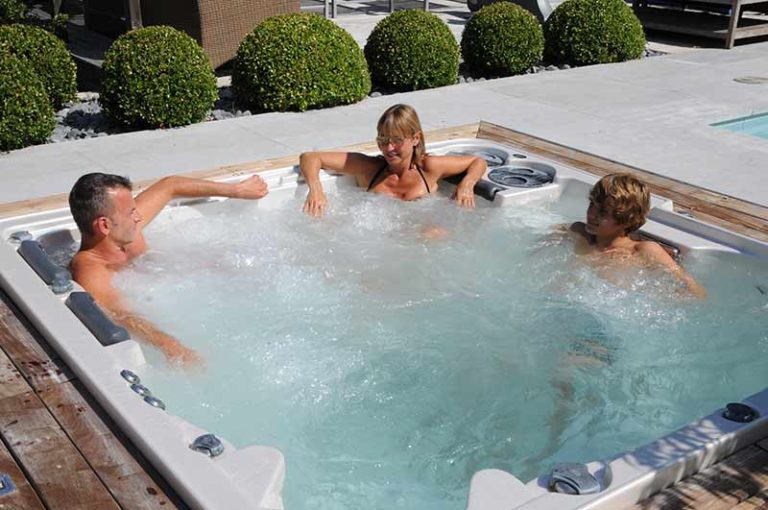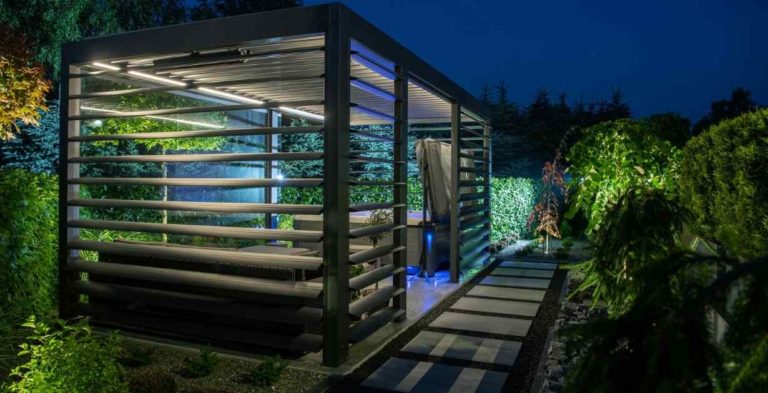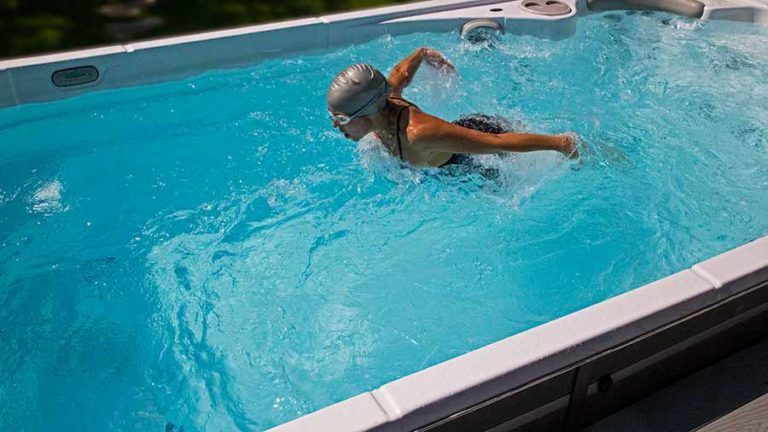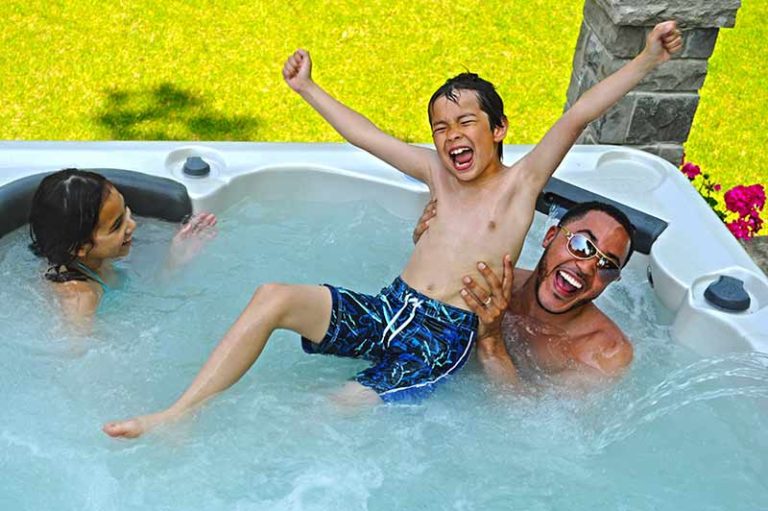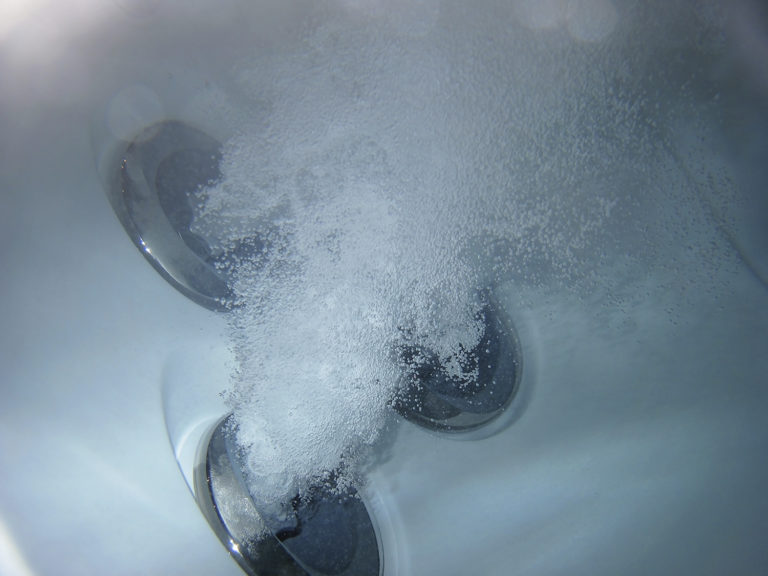Which Hot Tub is the Cheapest to Run?
Hot tubs have become increasingly popular, with benefits range from improving our well-being to more quality time with those important to us. But as energy bills continue to rise, the question many potential buyers are now asking is exactly which hot tub is the most economical to run?
For the purposes of this article we’re going to assume the hot tub (or swim spa) is positioned outdoors, so do bear in mind that an indoor tub will have a lesser need for energy.
As a general rule the cheapest hot tub to run will have extensive insulation inside the cabinet shell, ensuring minimal heat loss during water filtration. Keeping a tub covered with a well-fitted cover when not in use will also help retain heat in the water, as will an internal heat recovery system.
Most hot tub dealers are likely to tell you that the tubs they supply are the cheapest to run.
This is almost certainly not true! What is true is that certain features and types of hot tub will be more energy-efficient than others, and this is what we’ll be covering here.
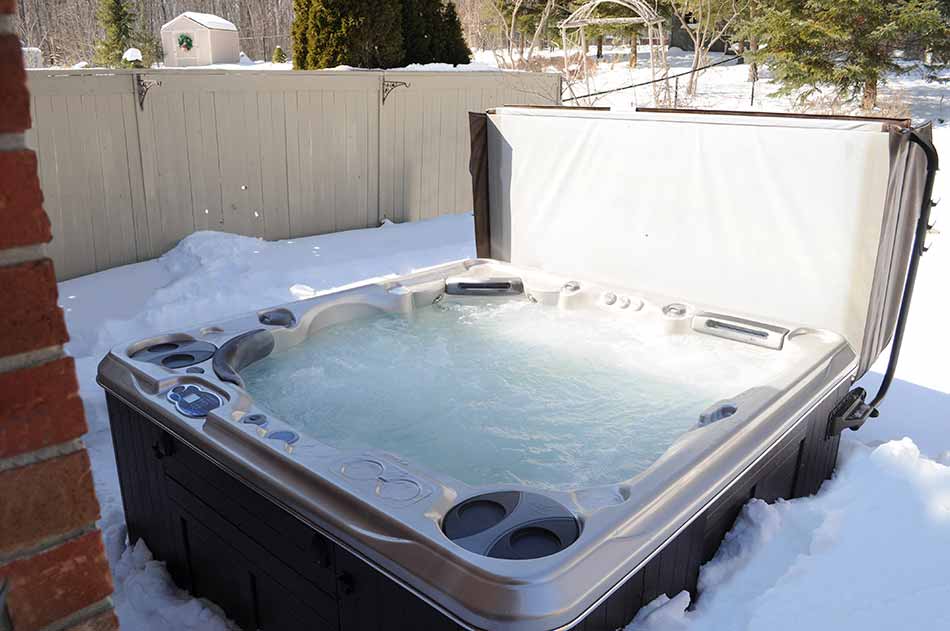

The purchase of a hot tub or swim spa is a significant investment, and so it is worthwhile looking at the pros and cons of all types so that everyone’s hopes and expectations for a luxury ‘at home’ experience don’t disappear down the plughole!
Running costs are probably most under the spotlight at the moment, given the projected steep rises in energy prices, so let’s look at the key factors that will have a bearing on all hot tub and swim spa owners’ wallets.
Cabinet Insulation
The quality of tub insulation is without a doubt the most important aspect to consider when it comes to energy efficiency.
The heater is working almost constantly to maintain water temperature, particularly in the case of inflatable and soft-sided hot tubs. The heat loss from the sides (the walls) of the hot tub and from the water surface could be substantial depending on the type of tub you’re considering.
As water leaves the hot tub to be filtered, it will quickly drop in temperature unless the environment it’s passing into is well-insulated, i.e. the inner cabinet shell.
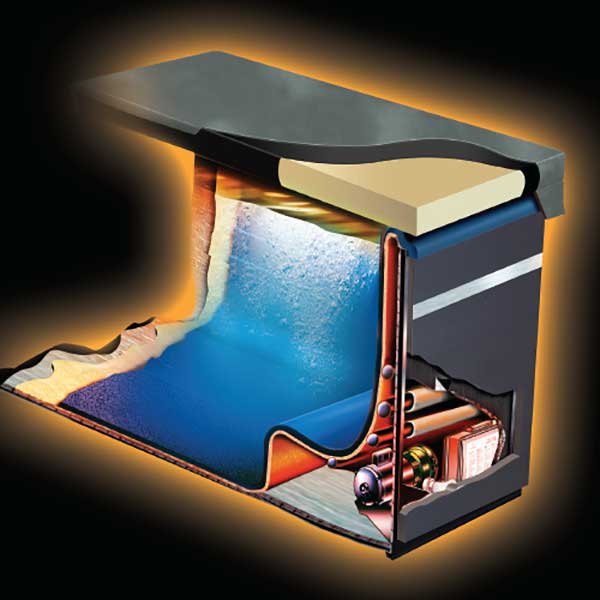

Before making a purchase ask the dealer to show you the internal cabinet. A well-insulated tub will have a protective thermal shield around the pipework, floor and wall.
Inflatable hot tubs have little to no insulation, although their initial purchase price is extremely cheap in comparison to their acrylic counterparts. Inflatable running costs have been reported at around £100* a month, so with rising energy prices this should be considered before purchasing.
Based on a usage by two people, two or three times per week, a fully-insulated hard-sided hot tub with a cover will increase your electricity bill by a little over £1.00* per day. A swim spa being used in the same manner will cost around £3* to £5* per day – please note swim spas vary greatly in size and hence water volume, which accounts for the price variation.
* Based on September 2021 energy prices
Hot Tub Water Temperature
Hot tubs hold up to 1,000 litres of water and swim spas contain up to 10,000 litres. Heating up such a large mass of water – and keeping it warm – is a tub’s biggest use of electricity so it makes perfect economic sense to retain heat wherever you can.
Optimum temperature for hot tub water is 35ºC to 38ºC, although owners may want to reduce this slightly in the summer as outside temperatures increase.
Dropping the temperature of your hot tub or swim spa water by just 1º can have a dramatic impact on running costs, often reducing energy consumption in some units by up to 10%.
Hot Tub Covers
The primary purpose of a hot tub cover is to retain heat. It will include a high-density foam insert encapsulated by a vinyl cover.
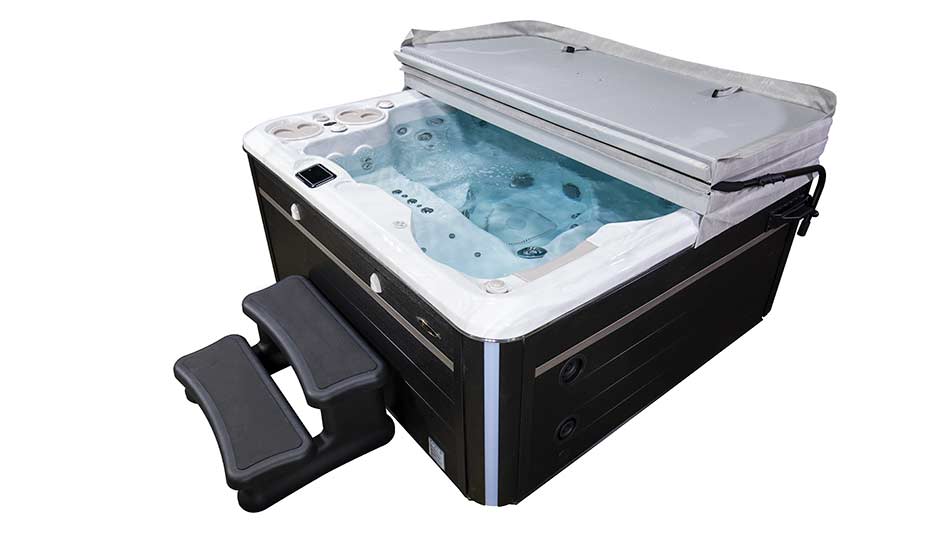

Over time, the foam insert within the cover will absorb moisture from the hot tub water and will require replacement, you should account for around 3 years before a replacement will be required.
The outdoor temperature will also have an impact when the hot tub or swim spa cover is off. The greater the difference between the water temperature and the outdoor temperature, the quicker heat will be lost.
Always cover your hot tub or swim spa when it’s not in use. Not only will heat be lost but water will evaporate too, requiring replacement and increased energy to bring it to the desired temperature.
Additional Factors in Reducing Hot Tub Running Costs
So far we’ve discussed the most common and well-known factors that will impact your energy bills as a hot tub or swim spa owner.
Here are a ten lesser-known factors to consider when assessing running costs:
- Internal heat recovery systems from pumps. Some models of hot tubs are able to “harvest” the heat from circulation pumps and feed this back into the water (heating). It’s a highly effective and innovative process, utilising heat as a by-product of the pump’s operation.
- Heat pumps are an excellent consideration, the capital investment (initial purchase cost) can be recovered within a relatively short period especially when being used for swim spas. A significant advantage of a heat pump is its ability to return up to 4 times the energy required offering considerable savings over the standard 3kW heater often installed in hot tubs and swim spas. The time taken to heat the water from start up is also considerably reduced, and can be as little as 6 hours, compared to 12 to 18 hours utilising the 3kW heater. Another advantage of heat pumps is they can work at low temperatures, many as low as -15⁰C so even in the coldest of weather you can enjoy much cheaper running costs.
- Solar panels, although not as popular as they have been, they still offer a very viable alternative to mains electricity and offer considerable benefits for domestic electricity demands. Couple solar panels with a heat pump, and running costs start to reduce dramatically.
- Ozone and/or UV systems have a positive impact. The additional capabilities offered by ozone and UV systems to disinfect the water could see a life extension to the water which in turn could reduce the frequency of needing to drain and replace the water, particularly with low bather use. Always ensure you maintain a regular (daily) water testing and water management regime to ensure the best water conditions.
- Draining and refilling the water, the more frequently you undertake this process – typically every 12 – 14 weeks (depending on water conditions and bather loading) – the greater your water costs will be, together electricity consumption to heat it.
- Water testing, chemical use and weekly shock dosing. Regular water testing is the best pro-active approach to managing hot tub water; leave it and it will go wrong. Daily, weekly tests are paramount and ensuring the correct sanitiser reading are maintained Free Chlorine 2 – 3ppm Bromine 2 – 4ppm pH 7.0 – 7.6 (7.2 – 7.4). Weekly shock dosing will ensure un-filterable waste is eliminated, water clarity improved and demand on the primary sanitiser reduced.
- Weekly filter cleaning – it’s important to remove trapped waste in order to ensure your hot tub runs efficiently. Blocked filters will see the circulation pumps work harder and therefore consume more electricity.
- Annual maintenance service. These are often overlooked but when neglected can cause expensive bills and elevated running costs. Systems such as Ozone and UV should be serviced every 18 months, these systems will not work effectively indefinitely. Pumps should be checked and cleaned as part of the service schedule; ventilation covers for circulation pumps can become clogged over time, simply cleaning these will reduce the demand on the pump (reduction in electricity demand).
- Hard water (high in dissolved minerals) Just as you will find with your kitchen kettle, the hot tub heating element will be impacted by hard water and will “fur up” if left untreated. You’ll know you have hard water if there is scale in your kitchen kettle, so the addition of scale inhibitor (‘Scale Away’) when filling your tub or spa from empty with new water and then supplementing with a weekly application will help prevent the formation of scale within the internal pipework and the heater element. If scale forms on the internal pipework this will restrict the flow of water and put an extra load on the circulation and booster pumps; this will require more power (electricity) and so will increase running costs.
- Variable-speed frequency inverters on circulation pumps, although relatively rare and more common on higher-end hot tubs, these offer real economy benefits. The speed of the pump (frequency) is reduced when demand is lowest (typically at night), whilst still maintaining water circulation and ensuring water filtration is at a lower level, when least required. Some parts of the world are making these types of circulation pumps mandatory via legislation, so it’s safe to assume other countries and regions will follow suit in the drive to conserve energy.
Buyer’s Checklist for Running Cost Efficiency
The Purpose of Your Investment
The relaxation and well-being benefits that ownership brings are undeniable, which is why we firmly believe that hot tub or swim spa should be for life and not just for a few months.
Soft-sided and inflatable hot tubs are a fun addition to your garden, but the cost of running them and the limitations of summer-use only can be frustrating.
Over time the running costs of an inflatable will accrue, making a fully-insulated hot tub, with all its additional economy-driven extras, a better long-term investment and one that will be enjoyed for many years.


